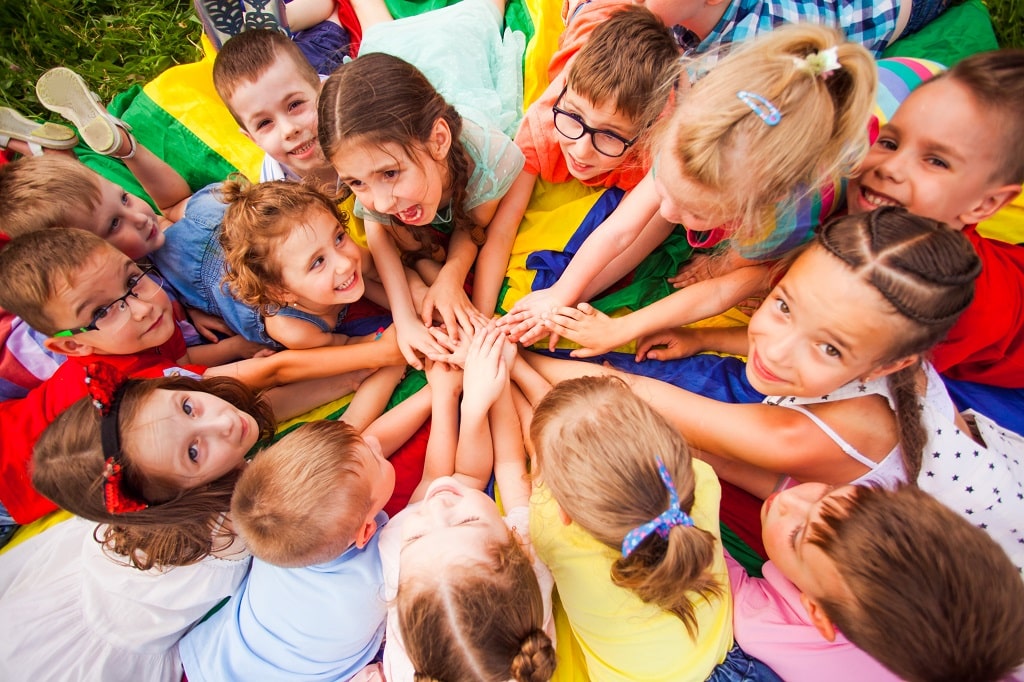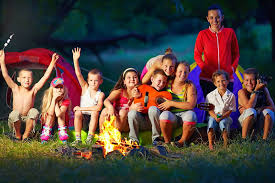Summer Camps and Lice: The Ultimate Parent Guide
Introduction

Summer camp is a cherished tradition for millions of children across the United States, and for many families, it’s one of the highlights of the year. The weeks leading up to camp are filled with excitement, from shopping for gear and labeling clothes to checking off the packing list. It’s a time when children anticipate days spent in the sunshine, surrounded by friends, learning new skills, and enjoying a sense of independence that’s hard to replicate anywhere else. Whether your child is looking forward to paddling across a calm lake, competing in friendly team sports, hiking through wooded trails, or singing under a starlit sky at the campfire, summer camp has a way of creating lifelong memories and building confidence.
Yet, alongside all the joy and personal growth that camp brings, there are a few less glamorous realities that parents must prepare for. One of the most common — and most frustrating — issues is the possibility of head lice. Every summer, without fail, LiceDoctors receives a surge of calls from parents whose children return home from camp with these tiny, unwanted guests. While lice are not dangerous and do not spread disease, they are persistent, highly contagious in close-contact settings, and notoriously inconvenient to eliminate without the right approach.
The truth is, summer camps provide the perfect environment for lice to spread. Shared sleeping quarters, frequent head-to-head contact during games or activities, and the sharing of personal items create ample opportunities for lice transmission. In this comprehensive guide, we will walk you through exactly what parents need to know to minimize the risk, handle the situation effectively if it arises, and keep the focus on what camp is meant to be — a safe, enriching, and unforgettable experience for your child.
Understanding Head Lice
What Are Head Lice?
Head lice (Pediculus humanus capitis) are small, wingless insects that live exclusively on the human scalp, feeding on small amounts of blood several times a day. These pests are typically about the size of a sesame seed when fully grown, although newly hatched lice — called nymphs — are even smaller and can be incredibly difficult to spot. Their color can range from nearly translucent to dark brown, depending on the host’s hair color and the lighting conditions, which makes them skilled at hiding in plain sight.
The female louse lays eggs, called nits, which are oval-shaped and yellowish-white in color. These nits are firmly attached to individual hair shafts close to the scalp using a glue-like substance secreted by the female. Unlike dandruff or lint, nits will not flake off when touched. In 7–10 days, nits hatch into nymphs, which quickly mature into reproductive adults capable of laying more eggs. This life cycle can repeat every few weeks, which is why an untreated infestation can persist indefinitely.
Why Are They Common at Camp?
Lice spread almost exclusively through direct head-to-head contact. They cannot jump or fly, and they can only survive away from a human scalp for about 24–48 hours. However, when children spend long periods in close proximity — as they do at camp — the opportunities for lice to transfer are abundant.
At camp, kids may sleep in bunk beds lined up closely together, lean in close to share a secret with a cabin mate, or huddle for a team cheer before a sports game. They may try on each other’s hats or costumes during talent shows, share hairbrushes while getting ready for an event, or simply let their heads touch while sitting on the same bench. All of these innocent and normal behaviors can facilitate the movement of lice from one child to another.
How Lice Spread at Summer Camp

1. Sleeping Arrangements
Shared sleeping spaces are one of the most significant risk factors for lice transmission. Even if campers bring their own bedding, the close proximity of beds and the tendency for kids to interact while lying down makes head-to-head contact almost inevitable. Children might switch beds during the night to chat with friends, gather in one bunk for a group story, or rest side-by-side during quiet time, giving lice the perfect opportunity to crawl from one head to another.
2. Group Activities
One of the best parts of camp is the wide variety of group activities offered, from sports and games to arts and crafts. Unfortunately, these same activities can bring heads together frequently. Team huddles, partner games, and even friendly hugs can all allow lice to transfer. Lice don’t need hours of contact to move — just a few seconds of hair-to-hair proximity is enough.
3. Shared Items
While direct contact is the most common way lice spread, they can also be passed through shared personal items, especially if the sharing happens soon after one child has used them. Hats, helmets, brushes, hair accessories, and even headphones can become temporary carriers. At camp, items are often borrowed or swapped without much thought, making this a real, if less frequent, risk.
4. Delayed Detection
Many camps perform lice checks only at the start of the session. While this initial screening helps, it doesn’t catch infestations that start after campers arrive. Without follow-up checks, lice can spread quickly before anyone notices symptoms, especially since itching — the most common sign — may not begin for several weeks after initial infestation.
Prevention Starts Before Camp
Step 1: Perform a Pre-Camp Lice Check
The most effective way to prevent lice from spreading at camp is to ensure your child starts the session lice-free. A thorough pre-camp check is a must. Ideally, this should be done by someone experienced in lice detection, such as a professional technician, because early infestations can be very difficult to spot.
How to check thoroughly:
- Seat your child in a brightly lit area, preferably with natural light.
- Lightly dampen the hair and apply a small amount of conditioner — this makes it easier to comb through and can help slow down any live lice.
- Use a fine-toothed lice comb, working methodically in small sections. Begin at the scalp and pull the comb all the way through to the ends of the hair.
- After each pass, wipe the comb onto a white paper towel or tissue and examine it closely for any signs of lice or nits.
If you find any evidence of lice, treat the infestation before camp begins to protect your child and prevent spread to others.
Step 2: Educate Your Child
Children are more likely to avoid behaviors that spread lice if they understand how lice are transmitted. Explain in age-appropriate language that lice move from head to head and that it’s important to:
- Keep their hair tied back in braids, buns, or ponytails during camp activities.
- Avoid head-to-head contact when possible.
- Use only their own hats, brushes, and hair accessories.
- Let a counselor know if their head feels itchy or uncomfortable.
Step 3: Pack Preventive Products
Send your child with items that help reduce risk:
- A natural lice-repellent spray containing tea tree, rosemary, or citronella oil.
- A labeled personal hairbrush.
- A personal pillowcase and fitted sheet (if camp allows).
- Extra hair ties and headbands.
Step 4: Choose Protective Hairstyles
For children with longer hair, keeping it styled in a braid, bun, or ponytail is an easy and effective way to reduce the risk of hair-to-hair contact.
What to Include in a Lice Prevention Kit
A dedicated lice prevention kit is a simple but valuable addition to your child’s packing list. Include:
- Fine-toothed lice comb
- Travel-size conditioner
- Natural lice-repellent spray
- Small mirror for self-checks
- Ziplock bags for storing hair accessories
- Extra pillowcase and fitted sheet
How Camps Handle Lice
No-Nit Policies
Some camps enforce strict no-nit policies, meaning children must be completely free of both lice and eggs before returning to activities. This reduces the chance of spread but can result in missed camp time if immediate treatment isn’t possible.
Live Lice Policies
Other camps allow children with nits to stay but send home those with live lice. In these cases, treatment may be done off-site or, if available, by an on-site lice professional.
Questions to ask before camp:
- Are lice checks performed at arrival?
- Are there follow-up checks during the session?
- What is the procedure if lice are found?
- Is treatment available on-site?
Detecting Lice During Camp

Lice detection during camp relies on vigilance from both campers and staff. Signs to watch for include:
- Persistent itching
- Small red bumps or sores along the hairline
- Visible nits attached near the scalp
If Your Child Gets Lice at Camp
If lice are discovered:
- Stay calm — lice are common and manageable.
- Get the facts — find out how and when the lice were detected and what steps have been taken.
- Arrange for treatment — some camps have professionals on-site; others may require pickup for treatment.
- Notify close contacts — this helps contain the spread.
Returning Home: Post-Camp Protocol
When camp ends:
- Check your child’s hair immediately.
- Wash bedding, clothing, and hats in hot water and dry on high heat.
- Seal unwashable items in a bag for 48 hours.
- Recheck hair one week later.
Myths vs. Facts About Lice at Camp
- Myth: Lice jump or fly. Fact: They crawl only.
- Myth: Only long hair gets lice. Fact: Any hair length is vulnerable.
- Myth: Chlorine kills lice. Fact: Lice can survive pool water.
- Myth: Lice come from animals. Fact: Only humans carry head lice.
FAQs for Parents
- Should I keep my child home if lice are found at camp? Not if they are lice-free and following prevention measures.
- Are boys less likely to get lice? Slightly, but both genders are at risk.
- What’s the fastest treatment? Professional manual removal.
Expert Tips from LiceDoctors
- Start prevention one week before camp.
- Change pillowcases mid-session if possible.
- Keep hair braided daily.
- Label personal items.
- Stay in touch with staff.
How LiceDoctors Can Help
We offer:
- In-home, all-natural lice removal
- Same-day service
- Preventive education
- A 99.6% success rate
Conclusion
Summer camp should be about adventure, personal growth, and fun — not the stress of dealing with lice. By preparing in advance, educating your child, and knowing exactly what to do if lice appear, you can ensure your child enjoys a healthy, memorable camp experience. If lice do show up, fast action and professional help will have them back to enjoying camp activities in no time.


